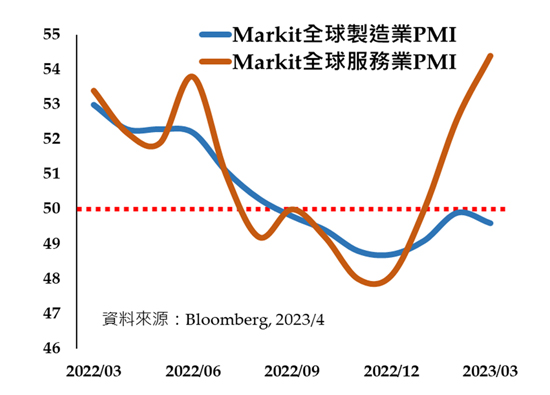07.2023 Life Guide
Sweating in summer has a fox odor? Elaborate on new treatment options
Far Eastern Memorial Hospital Plastic and Aesthetic Surgery / Dr. Zhang Zhewei


 On a scorching summer day, the sun is shining brightly, and people who spend a few minutes outdoors are sweating profusely. People with well-developed sweat glands not only have an abnormal amount of sweat, but also worry about the odor produced by sweat secretion, which not only brings inconvenience to personal life, but also causes trouble to others. This issue of 'Health Column' takes you to understand the causes and new treatment methods of body odor.
On a scorching summer day, the sun is shining brightly, and people who spend a few minutes outdoors are sweating profusely. People with well-developed sweat glands not only have an abnormal amount of sweat, but also worry about the odor produced by sweat secretion, which not only brings inconvenience to personal life, but also causes trouble to others. This issue of 'Health Column' takes you to understand the causes and new treatment methods of body odor.The origin of bromhidrosis can be traced back to the sweat gland structure. It is divided into two types of glands. The first is the sweat gland, which is almost distributed in the whole body skin. The secreted component is 99% water, and the other is composed of salt and body metabolites. Its function is to sweat and regulate body temperature. When the components in sweat are decomposed by bacteria, the odor produced is sweat odor. However, without any stimulation of environmental and physiological factors, excessive sweating is called "Hyperhidrosis", which is commonly found in armpits, palms and feet.
The second type of sweat gland is called apocrine gland or apocrine gland, which is only distributed in the armpits, chest, perineum, and ears. It secretes lipids and proteins with a special odor, and is used by animals to attract mates, but in the human body it is a degraded tissue. The commonly known fox odor is the odor produced by the decomposition of fat secreted by the sweat line into fatty acids. The smell of sweat is certainly a problem in life, but fox odor is more likely to cause negative social impressions.
Four major directions for treating fox odor
1. Change physical fitness: This includes reducing the intake of specific foods such as alcohol, onions, garlic, and curry, as well as treating related diseases such as chronic liver disease, gout, and sepsis.
2. Reduce the amount of bacteria: It is recommended to wear cotton clothes and change them frequently, with medicated soap or Shower gel. In addition, traditional or laser hair removal can also be considered.
3. Reduce sweat gland secretion: Try to stay in an air-conditioned environment, and also use sweating agent to cover the odor with essence, temporarily plug the sweat gland with small molecular wax blocks, or use special chemical ingredients (such as aluminum) to reduce sweat gland secretion. Additionally, local injection of botulinum toxin can also be used.
4. Removal or destruction of sweat glands: divided into two categories: non-surgical and surgical. The former is represented by "microwave energy", while the latter is divided into four treatment methods: "traditional apical gland resection", "minimally invasive spiral knife suction/ultrasound suction/water knife suction", "subcutaneous Nd: YAG laser", and "subcutaneous ethanol injection".
In the past two decades, the use of specially constructed spiral knives to scrape off the apical gland and then suck out the scraped gland has become a mainstream treatment method with minimally invasive wounds of less than one centimeter.
Comparison between microwave thermal energy and spiral knife scraping surgery
Microwave thermal energy
Spiral knife scraping
Action mechanism rotation
Using 5.8GHz microwave to generate heat, it disrupts the sweat lines at the junction of dermis and fat, allowing the damaged sweat glands to form fibrous tissue
Remove the subcutaneous apical gland through a specially constructed lateral opening outer tube and a rotating inner tube, and then use a suction device to extract the free gland
Treatment steps
1. Mark the treatment area
2. Local injection of diluted anesthetic and Vasoconstriction
3. Microwave probe sequentially heats sweat glands while dissipating heat
1. Mark the surgical area
2. Local injection of diluted anesthetic and Vasoconstriction
3. Minimally invasive incision and spiral knife resection of glands
4. Extraction of glands and Interstitial fluid
5. Cut stitching, compression gauze, and splay shoulder straps
Validity
Fox odor: About 90% of the odor has significantly improved, and 60% of the odor has completely disappeared
Hyperhidrosis: about 90% of the patients improved significantly, and more than 80% of the patients reduced their sweat by more than half
Fox odor: Over 90% of the odor has significantly improved, and nearly 90% of the odor has completely disappeared
Hyperhidrosis: partial improvement
Recovery period
No surgical recovery period
Mild postoperative pain
Eight shaped shoulder straps must be used to compress the armpit for about 3 days, and the suture should be removed about a week after surgery
Avoid upper arm abduction or lifting within a week
Minor complications
Skin paresthesia, Brachial plexus injury
Subcutaneous hematoma, infection, poor wound healing, hypertrophic scars
Long term tracking
The effect is long-lasting, and about 10% of patients need to perform more than 2 courses of treatment
Long lasting effect with minimal recurrence
epilogue
In 2011, the Food and Drug Administration (FDA) used microwave heat to destroy the sweat line at the junction of dermis and fat to treat Hyperhidrosis, and subsequently further applied to the treatment of body odor. In recent years, due to the COVID-19, medical consultation and surgical preparation have become more complicated. Non operative microwave heat has become a new choice for patients with Hyperhidrosis and body odor.
※ Note: Doctor Zhang Zhewei specializes in burn and scar treatment, pressure sore, Diabetic foot, rolled nails, frozen nails, drooping eyelids, eye bags, temporal skin pulling, micro integration and laser, body carving liposuction, hand surgery and micro reconstruction, facial fracture reconstruction.
#



















